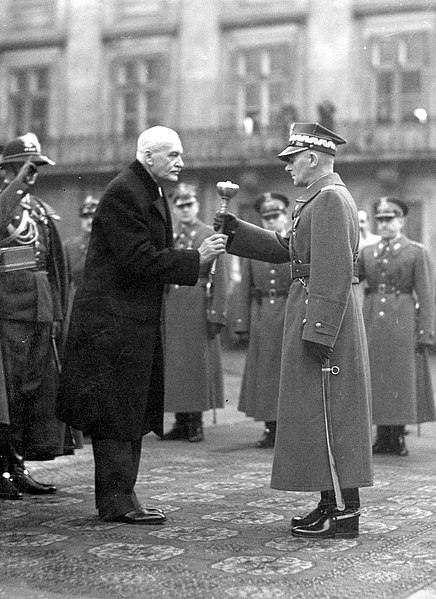The Polish–Lithuanian War was an undeclared war between newly independent Lithuania and Poland following World War I, which happened mainly in the Vilnius and Suwałki regions. The war is viewed differently by the respective sides. According to Lithuanian historians, it was part of the Lithuanian Wars of Independence and lasted from May 1919 to 29 November 1920. Polish historians deem the Polish–Lithuanian war as occurring only in September–October 1920. Since the spring of 1920, the conflict became part of the wider Polish–Soviet War and was largely shaped by its progress. It was subject to international mediation at the Conference of Ambassadors and the League of Nations.
Image: Józef Piłsudski w Sejnach (22 320 1)
Image: Sejny Parada
Image: Lithuanian soldiers of the Fifth Infantry Regiment in the forests of Vievis during the fighting with the Żeligowski's unit of the Polish Army
Image: Commemoration of the Day of Independence of Lithuania on 16 February 1920 in Kaunas
The Second Polish Republic, at the time officially known as the Republic of Poland, was a country in Central and Eastern Europe that existed between 7 October 1918 and 6 October 1939. The state was established in the final stage of World War I. The Second Republic ceased to exist in 1939, after Poland was invaded by Nazi Germany, the Soviet Union, and the Slovak Republic, marking the beginning of the European theatre of the Second World War. The Polish government-in-exile was established in Paris and later London after the fall of France in 1940.
Polish defences at Miłosna, during the decisive Battle of Warsaw, August 1920
Marshal Józef Piłsudski, Chief of State (Naczelnik Państwa) between November 1918 and December 1922
The May Coup d'État (1926)
Ignacy Mościcki, President of Poland (left), Warsaw, 10 November 1936, awarding the Marshal's buława to Edward Rydz-Śmigły








